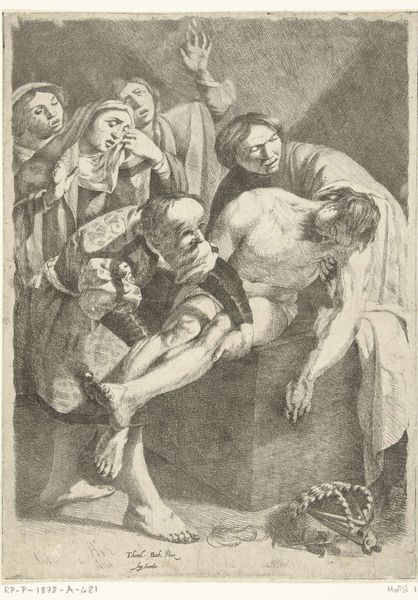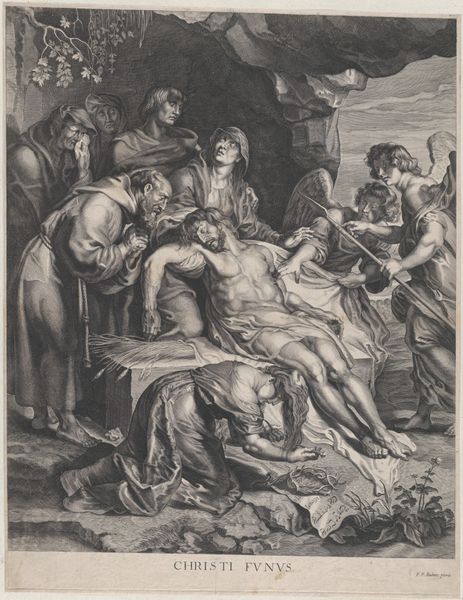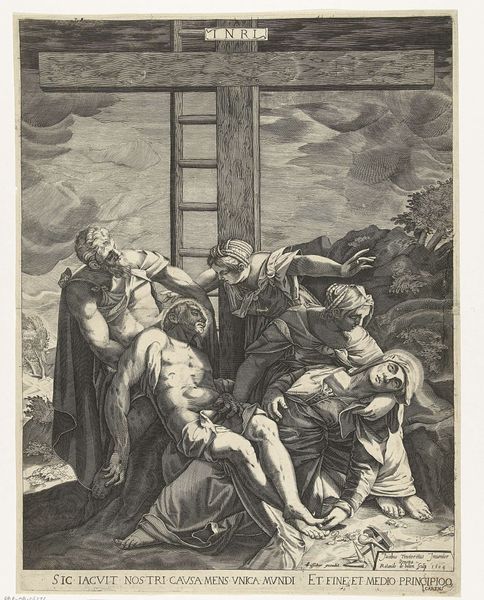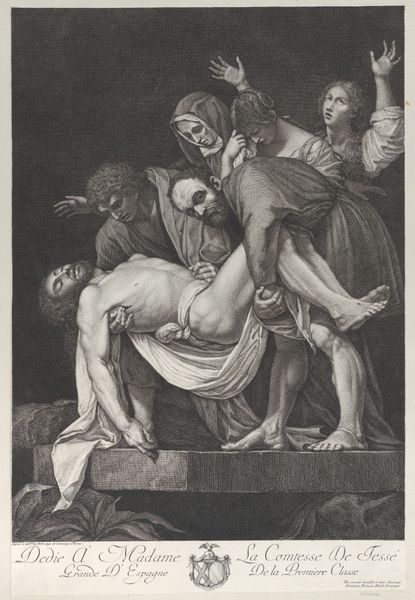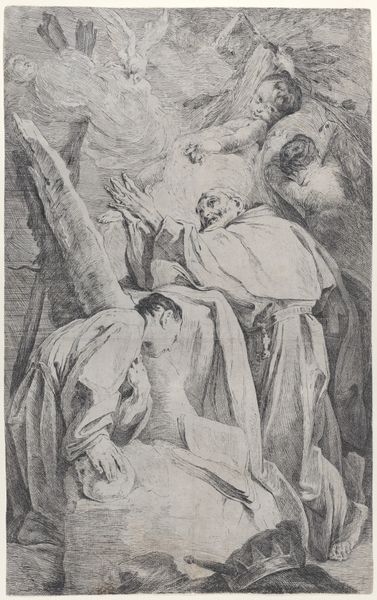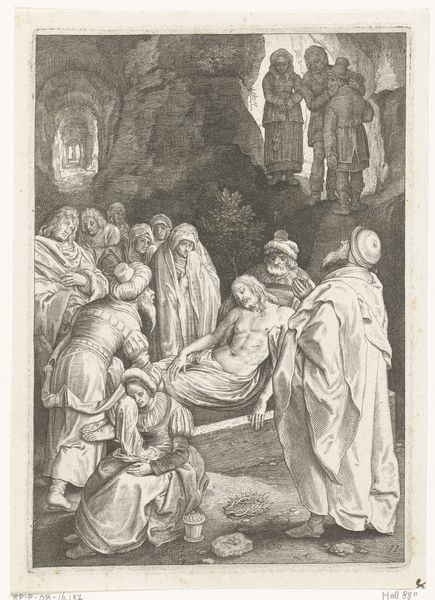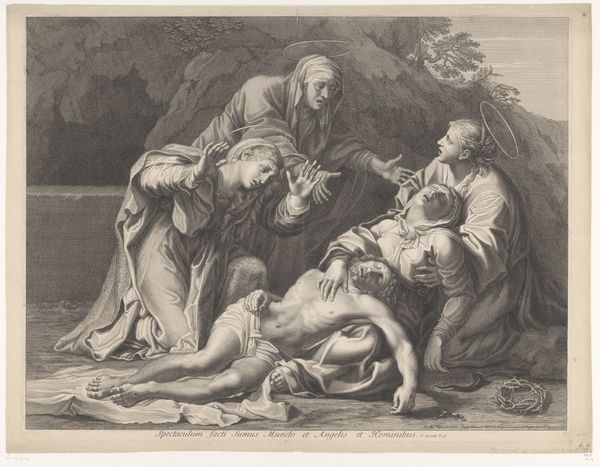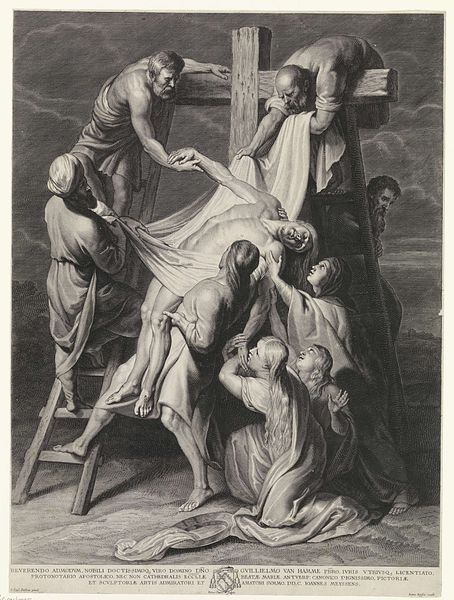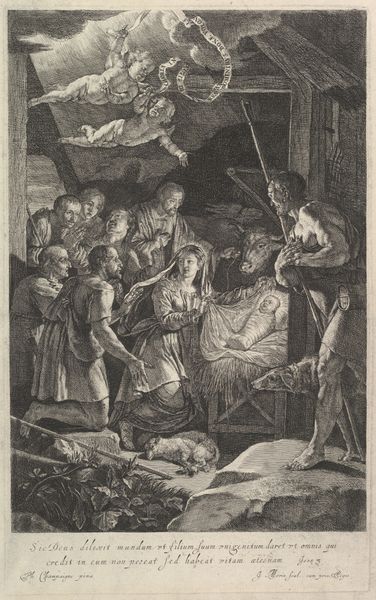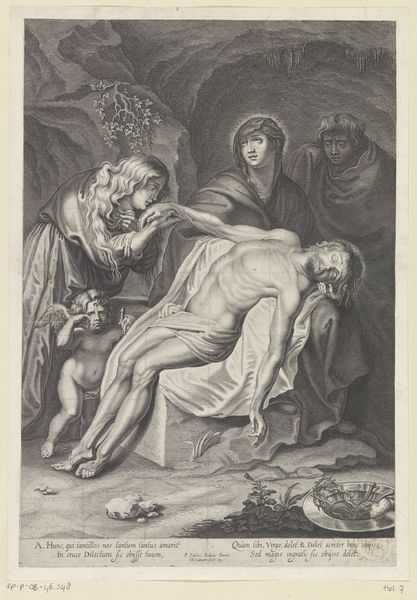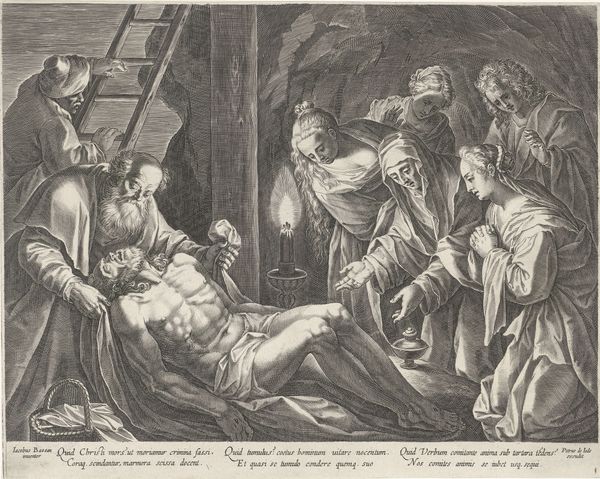
print, engraving
#
baroque
# print
#
figuration
#
line
#
history-painting
#
engraving
Dimensions: height 329 mm, width 284 mm
Copyright: Rijks Museum: Open Domain
Curator: Immediately striking is the dramatic contrast between light and shadow, wouldn’t you agree? Editor: I do. It pulls the viewer into the somber scene. This engraving, "The Entombment of Christ," was created sometime between 1616 and 1657 by Paulus Pontius. Curator: What interests me most are the processes involved in creating such a piece. Think about the labor, the tools required, the mastery of engraving needed to achieve such intricate detail. The sheer act of transferring the image from one surface to another—from metal plate to paper—speaks volumes. Editor: And consider how readily accessible these prints were compared to paintings. Prints played a key role in disseminating religious and historical narratives. Here we see the moment Christ's body is laid in the tomb. The figures surrounding him express profound grief, embodying the Catholic Counter-Reformation's emotional engagement. Curator: Right, and the texture created by the lines mimics the folds of fabric, the pallor of the skin, the roughness of the stone tomb. Look at the range of tones he gets from just lines. What type of paper do you think Pontius used? Where did it come from? And how were such prints consumed by audiences in the 17th century? These prints weren't merely aesthetic objects; they were carriers of ideology. Editor: Absolutely. And they reinforced the Church's authority. The visual language here—the gestures, the composition—adheres to established conventions for portraying religious subjects. How was it originally displayed, or sold? We see it today presented by the Rijksmuseum, but such spaces alter the way an image might function. Curator: A point well-taken. But without access to that skilled craftsmanship and those humble materials--metal and paper--these displays and power dynamics would simply be moot. The physical reality underpins the ideological message. Editor: A collaboration, in essence. One informing the other within the complexities of the period. Curator: Precisely. It deepens our appreciation.
Comments
No comments
Be the first to comment and join the conversation on the ultimate creative platform.
